
LAHORE:
The province’s libraries and archives are now being managed under a single administration as the Punjab Archives and Libraries Department.
The Public Libraries section of the Higher Education Department was merged with the Archives Department on March 2 to form the new administrative unit.
With the change, the Archives and Public Libraries Department got control of six libraries from the Higher Education Department. It is also seeking to take over 12 libraries previously under the control of district governments in the Punjab.
Archives and Libraries Secretary Orya Maqbool Jan said he had fought for the change since taking office as archives secretary in August 2012. This would help “to build a network of libraries, across Punjab as well as internationally, to facilitate readers and researchers,” he said. He added that it was common practice in the developed world for archives and libraries to be managed through a single administrative set-up.
Jan said that Pakistan had not built a single public library since 1973, when a library was set up in Multan.
Maqsood Ahmed Lak, the director general for public libraries, said that the work of the previously separate departments was similar so the merger made sense. He said that the distribution of responsibilities was still being worked out.
The chief minister officially approved of the merger in early February, he said, after which the Punjab Rules of Business 2011 were amended to remove the function of developing libraries and promoting culture from the Higher Education Department.
Jan said that since the merger, he had started preparing a list of people interested in donating books. “I have 9,000 books which I would like to donate. There are 100 book collectors I know of in Punjab who are interested in donating books. I want to mobilise these people,” he said.
The secretary said that he had set four priorities at his department, which is based at the Civil Secretariat in Anarkali. First, to improve the conditions of libraries across Punjab and set up a library in each district. Second, to create a network of book collectors who could donate books and an internet-based network of libraries.
“All libraries across the province should be connected so that a reader in Lahore could benefit from material available in a library in Multan or Jhang. Web memberships will be made available,” he said
Jan said he would also digitise books in all libraries and then obtain membership to a global virtual library, which would connect with the 110 best libraries in the world.
The libraries taken over from the Education Department are the Punjab Public Library (building completed in 1884), the Quaid-i-Azam Library (1861), the Model Town Library (1921) Lahore, the Central Library in Bahawalpur (1924), the Public Library in Garh Maharaja in Jhang, and the Jinnah Public Library in Sahiwal (1927).
The libraries to be taken over from the district governments are the Dayal Singh Public Library in Lahore (built in 1928), the Darus Salam Library in Lahore (1966), the Municipal Library in Shah Muhammad Ghaus, Lahore (1926), the Pakistan National Centre at the Alfalah Building in Lahore, the Iqbal Library in Sialkot (1894), the Iqbal Municipal Library in Murree (1932), the Municipal Library and Reading Room in Mianwali (1946), the Municipal Library in Dera Ghazi Khan (1948), the Allama Iqbal Library in Faisalabad (1911), the Pakistan National Centre in Multan (1973), the Public Library and City Reading Room in Bagh Langay Khan in Multan (1850), and the Municipal Library in Rawalpindi (1873).
Renovations
The archives and public libraries secretary said that two new basements had been built at Quaid-i-Azam Library and books were being moved into them from the library’s first and second hall in order to expand the reading space in the ground and first floors. The building’s ceiling is now being repaired. The library holds around 150,000 books.
The hall upstairs has been made into a reading room where 75 gazettes and magazines and at least 12 newspapers will be available to walk-in visitors, members and non-members.
In a month’s time, Jan said, a connection would be established with the global virtual library. This will enable Quaid-i-Azam Library members to connect with any of the 110 member libraries, which include the India Offices Library in the UK, which has the largest archives in the world, and the Library of Congress in Washington DC.
He said that Rs20 million had been allocated to rebuild parts of the Punjab Archival Library building, built in the 1850s, at the Civil Secretariat. “It needs more reading space and hence a basement will be added to the building,” he said.
Jan said that the Punjab Public library, built in 1884, would be remodelled as the existing building is “dingy and cold and offers little space to visitors”. The Wazir Khan Baradari at the back of the building will be repaired with the help of the Archaeology Department and the library’s interior will be remodelled.
Jan served in Chaghi, Mastung and Sibbi in Balochistan before being transferred to the archives department. “I built public libraries in the midst of public parks at all three places. An environment has to be given to the public … to encourage them to visit libraries and read,” he said.
Published in The Express Tribune, March 7th, 2013.
COMMENTS (1)
Comments are moderated and generally will be posted if they are on-topic and not abusive.
For more information, please see our Comments FAQ
















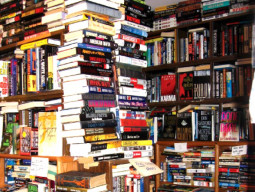
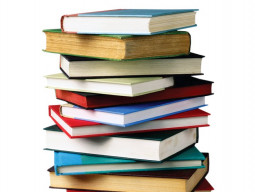
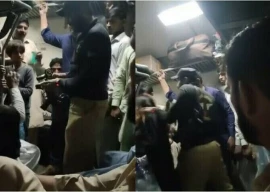
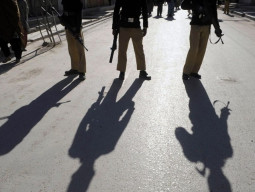
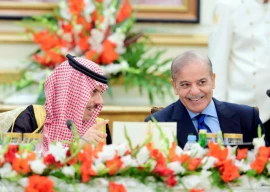
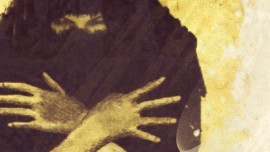
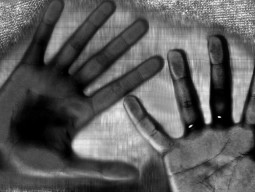















Jan said that Pakistan had not built a single public library since 1973, I think the Provincial government is Unable to do a better for public libraries thats why They spent money for laptops and BRT under pass blah blah blah just for pre poll rigging.@Reporter u are doing a good job this is very informative and astonishing article for books lover....Keep it up